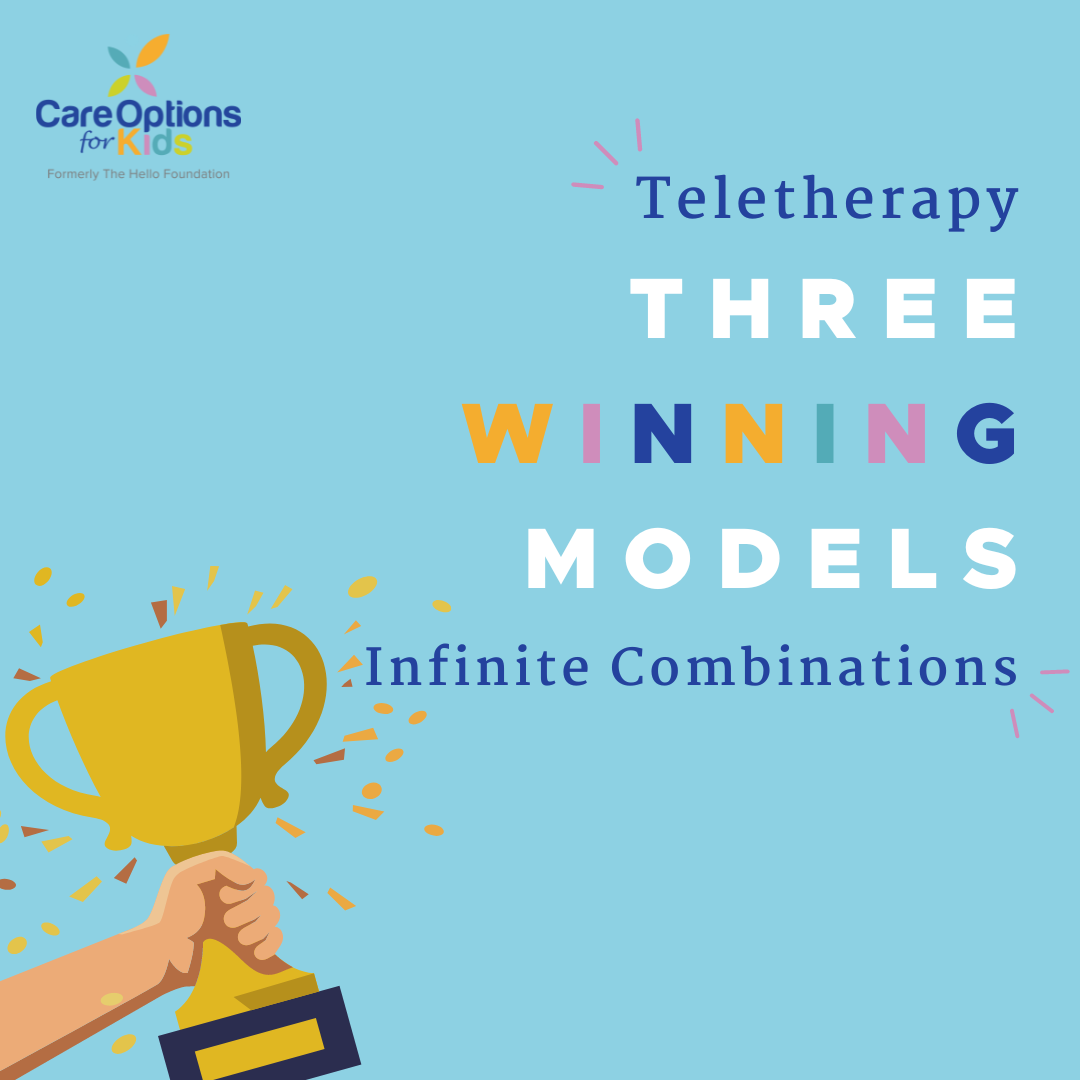
Administrators and clinicians nationwide are raising inquiries regarding telepractice implementation in school environments. These dialogues involve various considerations, including financial and time-related assessments, assumptions about feasibility, and concerns about potential compromises.
At Care Options for Kids, we’ve been at this telepractice thing for nearly two decades now. We've participated in various models utilizing telepractice to address challenges such as a shortage of specialists, high or low caseloads, extensive geographical distances, and even housing affordability issues. ASHA's Special Interest Group on Telepractice published a Perspectives article discussing telepractice as a strategy for workload management. Interestingly, these diverse implementations haven't evolved towards a single, perfect telepractice model. Instead, each district, building, and team has adopted telepractice in a manner that best suits their unique circumstances.
3 Winning Telepractice Models
Understanding the infinite flexibility and adaptability of telepractice designs is one matter, but crafting a concrete plan is another challenge altogether. To stimulate your brainstorming and foster creative thinking, here are three instances of hybrid solutions integrating onsite and telepractice SLP services. These examples have demonstrated success, serving as winning combinations for both school districts and students alike.
1. Paraprofessionals and/or
Bilingual Facilitators Service Model
Some districts serve a significant number of Spanish-speaking students, but don’t have the bilingual SLPs required to support them. One solution has been to hire bilingual facilitators/paraprofessionals to co-teach with highly qualified SLP-telepractitioners. Using a 3:1 model and a hybrid schedule, the SLPs and bilingual aides/paraprofessionals can run sessions together over streaming video and complete evaluations together during an onsite consult week.
Why it's win-win: Schools can more readily recruit facilitators or aides from the local community compared to finding licensed SLPs. The SLP brings their expertise to design and oversee therapy sessions, while bilingual assistants are utilized to perform evaluations that are culturally and linguistically appropriate. Additionally, mentoring and training these local aides represent a valuable long-term investment in the community.
2. SLPA Model
In certain school settings, our SLPs collaborate with certified Speech-Language Pathology Assistants (SLPAs). These qualified professionals are equipped to implement therapy plans, follow lesson plans, and gather and document data under the guidance of an SLP. Through this telepractice model, a part-time SLP can partner with a SLPA to blend onsite and remote work. They can handle administrative duties and paperwork for the entire caseload remotely while supervising SLPAs through live video sessions, thereby dedicating onsite hours to evaluations, student observations, and collaborative efforts.
Why it's win-win: With the support of Speech-Language Pathology Assistants (SLPAs), districts can optimize the use of SLP time. SLPAs benefit from both direct and indirect supervision, tailored to their specific needs, rather than adhering to a rigid schedule of minimum minutes each week. This approach fosters continuous learning and professional development for SLPAs.
3. Direct Telepractice Model
On occasion, unique circumstances allow for innovative applications of telepractice. For instance, one of our partner districts opted to employ SLP-telepractitioners at the middle school level due to a high prevalence of students with Autism Spectrum Disorder (ASD) and various support models, ranging from self-contained classrooms to classroom scheduling to drop-in resources. Given the absence of additional support staff to assign to a telepractice SLP, they devised a solution by establishing telepractice stations in small rooms adjacent to the support classrooms. Here, students engaged in 1:1 sessions directly with the SLP via telepractice. Recognizing the social nature of many goals, our SLPs pre-instructed skills or reviewed videos during these sessions, while working with larger groups during onsite visits. Consolidating students into larger groups during onsite time also afforded the SLPs opportunities to conduct in-person assessment tasks.
Why it's win-win: Districts can fill their need for SLPs without having to hire additional support staff. Students with social goals can access support within their academic schedule, in a variety of supported contexts.
The decision between traditional face-to-face services and telepractice via streaming video isn't as clear-cut as it once appeared. Our advice? View telepractice as just one of several service delivery models. Similar to traditional approaches such as individual sessions, small group sessions in the speech room, or classroom visits, there's seldom a one-size-fits-all solution for your entire caseload. We must adapt to our circumstances and available resources. Often, creative approaches yield surprising outcomes.
There are many combinations and varieties of service provision, and all kinds of reasons for choosing one design over another. Can you imagine a winning combination for telepractice and your district? Contact us and we'll help you find a solution for your unique needs!
